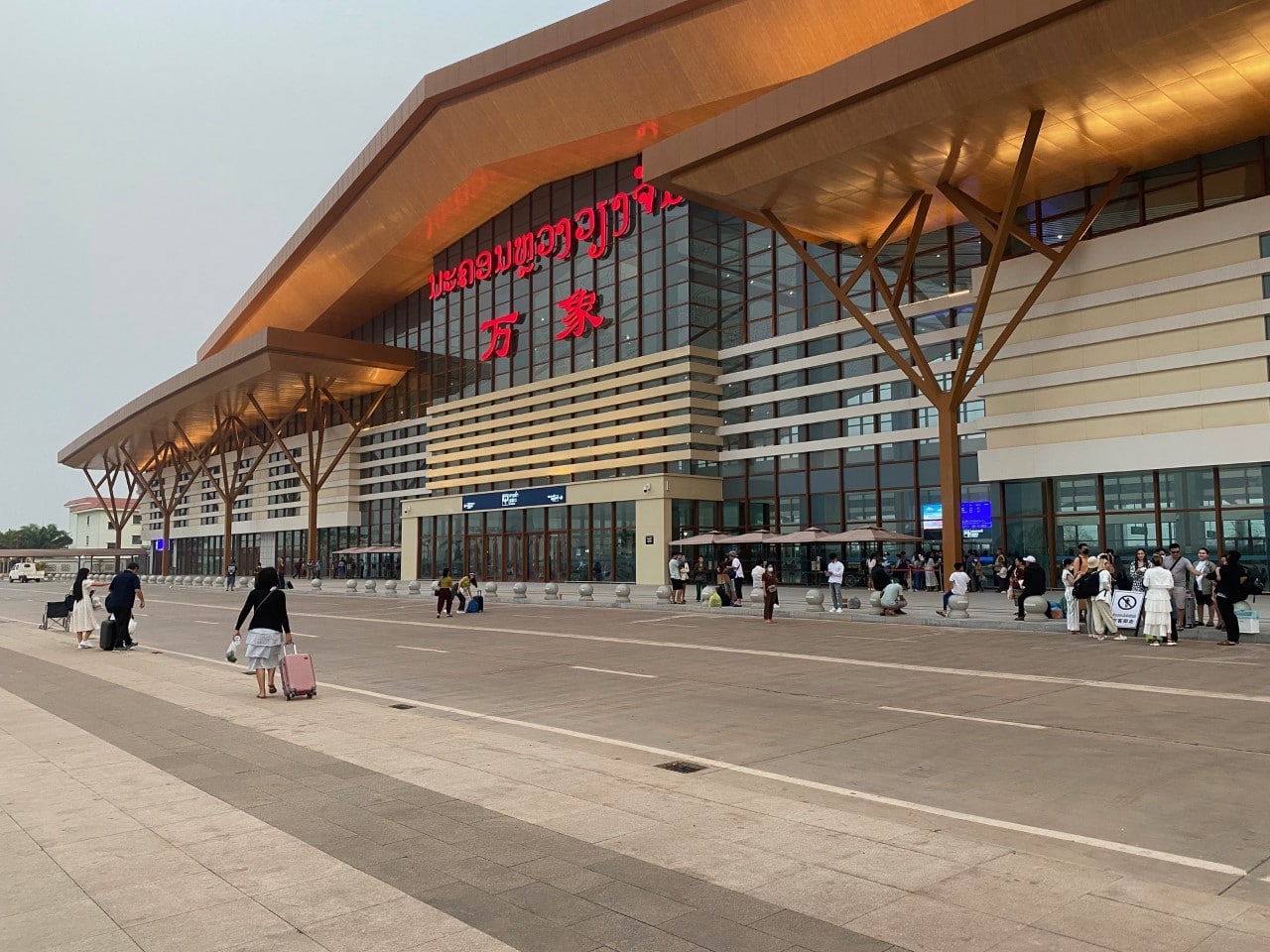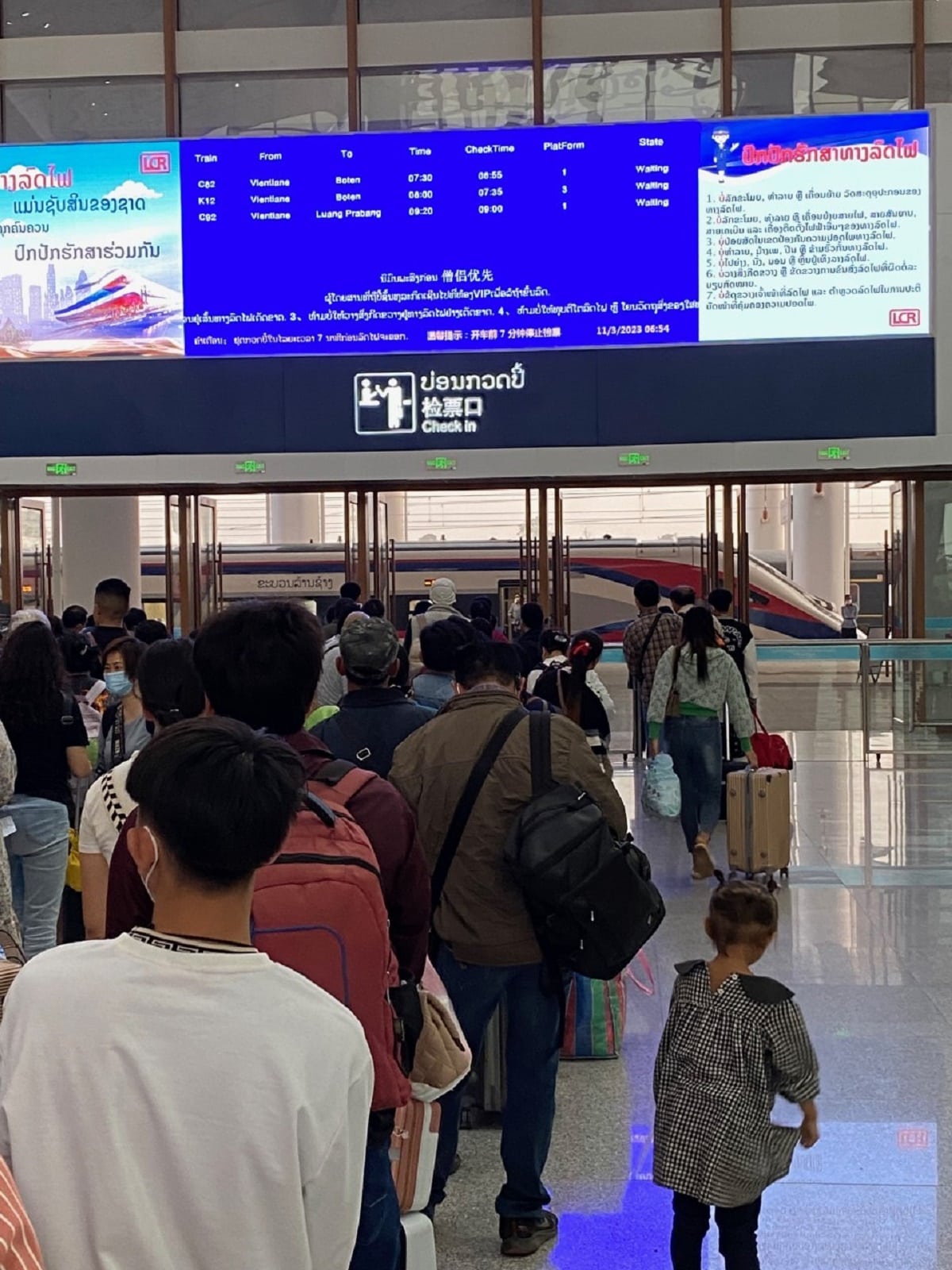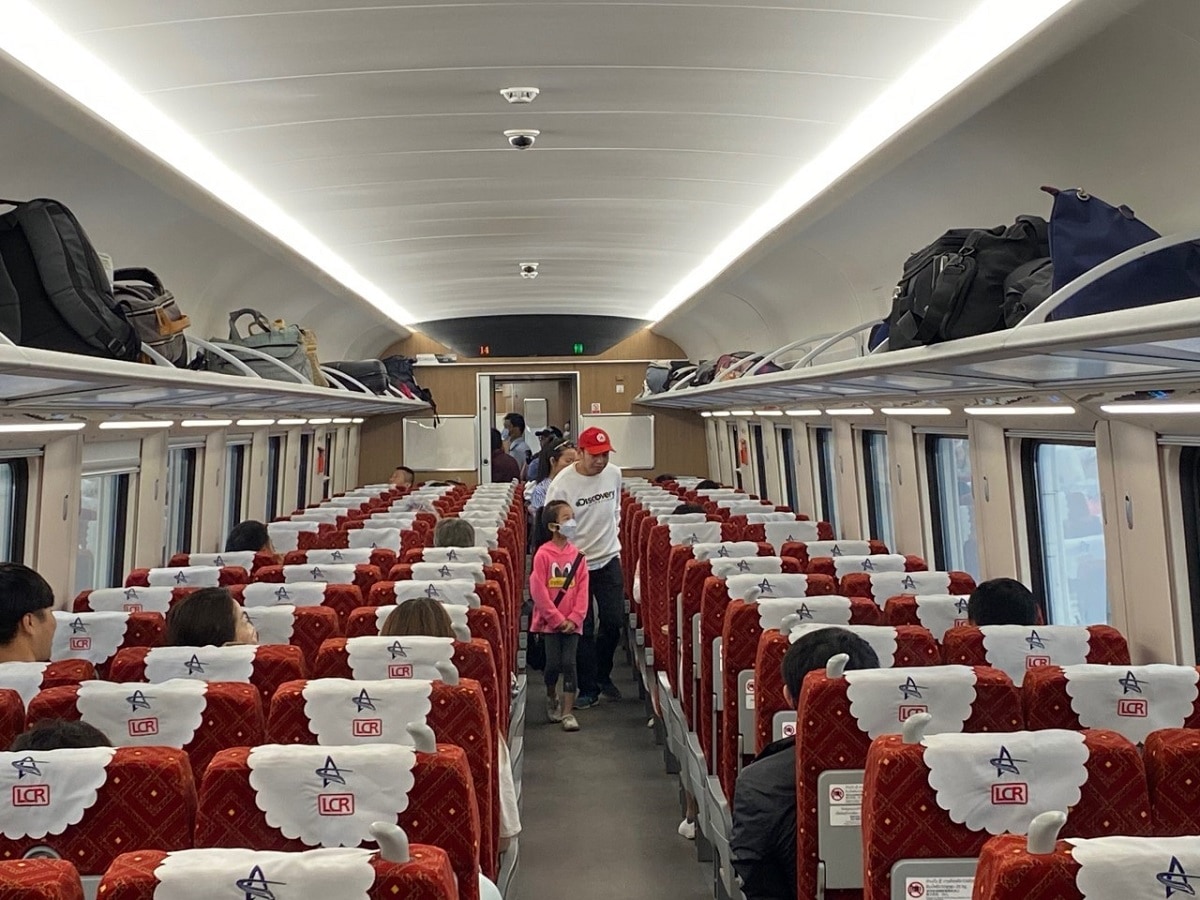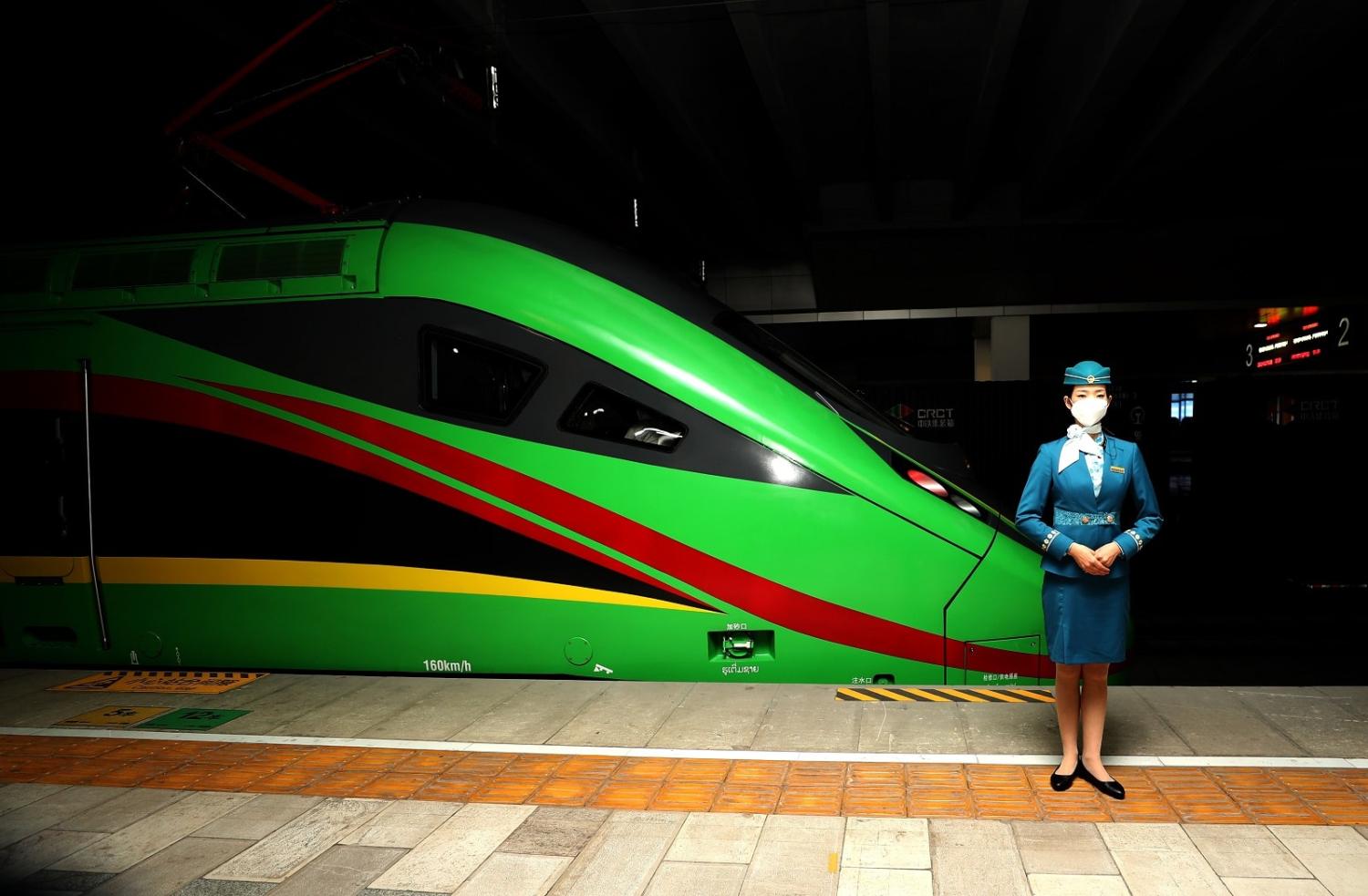All aboard
Next year will be the 30th anniversary of one of Australia’s signature contributions to economic development in Southeast Asia – the Friendship Bridge spanning the Mekong River between Laos and Thailand.
Milton Osborne neatly captures the transformative nature of this first modern Mekong crossing in his history of the river, declaring the Australian-financed bridge and its successors to be “part of a massive change, much of which will further diminish the already limited role the Mekong has as a means of transport for goods and passengers”.
That point was underlined last July when the first Chinese goods shipped on the now one-year-old Chinese-built fast train between Kunming in China and Vientiane were transferred via the bridge for forward freighting into Bangkok on the narrower gauge Thai rail network.
And it was reinforced for me last week by contrasting journeys in the region’s only landlocked country. A rather shop-worn cruise boat on the river was sparsely patronised as tourists slowly trickle back into a nation desperate for foreign exchange in the face of a potential debt crisis.
But the new passenger train service north out of Vientiane was packed with mostly Lao travellers who often queue for hours for tickets, although that may change with the planned introduction of online bookings this week. And the constant sight of China Rail goods carriages either parked or rolling past along the route showed how Laos is no longer isolated.
The opening of the Vientiane hub to transfer containers from the Chinese train to the Thai train across the Friendship Bridge is meant to be the first step towards a dedicated new rail bridge to fully connect the rail systems.

Thailand has been dragging its feet on this interconnection process, which is part of the bigger Chinese Belt and Road Initiative (BRI) plan for a fast train all the way to Singapore. It has rejected Chinese ownership of any new land corridor and appears to want to ensure it has the manufacturing capacity to send as much product into China as China can send its way.
But in Laos, this unlocking of one of the region’s isolated and obscure traditional communist regimes via modern infrastructure has revived positive feelings about Australia’s original role in all this. In an interview with The Interpreter last week, Deputy Minister of Foreign Affairs Thongphane Savanphet described the Friendship Bridge as the beginning of his country’s shift from being landlocked to land-linked with more Mekong bridges, a planned train/road corridor to a Vietnamese port and even a possible tourist rail connection into Cambodia.
Coming out
Russian and British-educated Thongphane seems likely to be an important figure in the Albanese government’s new Southeast Asia engagement strategy, with a summit of Southeast Asian leaders in Sydney likely around April of next year.
This will be the second such gathering after the inaugural 2018 summit in Australia but will take on more significance after the release of the government’s new strategy for increased business engagement with the ASEAN countries and the manoeuvring over China’s rise, underlined by this week’s nuclear-powered submarine announcement.
But despite deeper relationships with more substantial ASEAN countries, Laos will loom large because it will be both the ASEAN chair country during the summit and Australia’s coordination partner in ASEAN until the middle of next year. Australian officials met ASEAN officials to discuss the summit in Vientiane this week.
Thongphane says he is looking forward to a sideline business event and some agreements on maritime cooperation at the summit. He also sees potential for more bilateral cooperation in agriculture, vocational training, acceptance of Lao workers (as was planned under the old agriculture visa), and he would like to see more Australian students coming to his country under the New Colombo Plan.
He cited an Australian-funded scheme for Laos to use its experience as a relatively new and small entrant to ASEAN to help Timor-Leste make the same transition as an example of creative cooperation with Australia. “We can help them with training their officials in trade, with the need for English and how to get their businesses more active in ASEAN. We can keep up with all of that now,” he reflected on his own country’s steep learning curve after joining ASEAN in 1997.
He also welcomed closer defence ties between the two countries with the appointment of a defence attaché at the Australian embassy but suggested progress had been slower on more Australian Federal Police engagement even though he described drug trafficking and use as the country’s number two national priority after economic recovery.
As for Laos’ third time in the ASEAN chair next year, Thongphane said he expected the regional financial situation will have improved with the return of tourists. And despite particular expertise in dealing with Myanmar due to a shared border, he said Laos would be sticking with the ASEAN consensus position on the country’s internal divisions. “Myanmar will take time to resolve. It’s not easy for ASEAN,” he said.

Fraternal relations
While the Laos–China Railway operates in Lao, Chinese and English, there is relatively restrained Chinese signage in the country’s tourist sites despite the pre-Covid growing dependence on northern visitors. But billboards for Chinese goods such as BYD cars are an omnipresent feature of the Vientiane skyline.
The new train has been carrying more than 10,000 passengers on some days in recent weeks, but Thongphane says Laos is also close to reopening old air routes to northern China in a bid to push back towards its pre-pandemic annual tourist arrivals of more than 4.7 million. The country is expecting about a third of that number this year with Chinese visitors contributing at least a quarter of the inflow and then rising fast. But despite the new train, there are accounts of Chinese travellers arriving in camper vans since the border opened in January in a striking insight into the new people movement in modern Asia.
The growing Chinese economic presence in the country provides a difficult context for considering how Australia should make use of the positive feeling about the Friendship Bridge when the 30th anniversary rolls around about the time the summit is held.
Australia has long since abandoned tied-aid funded infrastructure construction such as the bridge. Although, the revival of infrastructure building in the Pacific in recent years under the Australian Infrastructure Financing Facility for the Pacific (AIFFP) raises the question of how to respond to periodic Lao requests for a return to the field even though China now dominates the construction scene.
At the 2018 ASEAN Summit in Sydney, then Lao prime minister and now President Thongloun Sisoulith talked fondly about his early career as an aid negotiator on the Bridge in the early 1990s. This seems like an opportunity not to be missed in building links ahead of next year’s summit.

Paying the piper
Sitting in a packed second-class carriage on the new train after a scramble for a ticket, it is hard to ignore one of the biggest economic management issues facing the country. Can a tourism recovery possibly justify the debt burden from this BRI spearhead into Southeast Asia?
The railway construction cost was US$5.9 billion for the 400 kilometres to the Chinese border with extensive tunnels, which is about one third of the country’s annual GDP. However, China paid about 70 per cent of the cost apparently in return for the broader access beyond Laos and land access along the route. It also provided additional service and equipment assistance. The Laos capital share is reportedly funded by Chinese lenders.
Thongphane is quick to point out in our discussion that Laos has avoided predictions of a foreign debt-driven financial collapse like Sri Lanka suffered last year. However, it is unclear for how long or on what terms China has provided debt rescheduling.
The World Bank has forecast that Laos’ public (almost entirely foreign) debt was set to equal its GDP by the end of last year amid a decline in the currency due to poor foreign earnings such as tourism. And its annual debt servicing obligation of about US$1.3 billion was forecast to equal its foreign reserves until the opaque apparent rescheduling with China.
The Bank says: “A fiscal adjustment alone, particularly through protracted expenditure curbs, will not be sufficient to improve debt sustainability without harming long-term growth prospects, as the debt overhang will undermine critical investments in human capital, crowd out private investment, and fuel macroeconomic instability.”
While China dominates Laos’ official financing and investment, Thailand and Vietnam are still important trading partners providing a sliver of hope for some economic diversity from China with the right transport links. Hydro-electricity sales to ASEAN neighbours are a key source of revenue but are coming under pressure for endangering tourist attractions and producing diminishing returns from riverine dams.
So how much can the lure of an easier passage to one of the region’s once most isolated, now World Heritage-listed, ancient capitals in Luang Prabang contribute to fixing the debt pressures?
A Japan External Trade Organisation researcher economist Keola Souknilanh says Laos benefits most from passenger flows but Thailand and China benefit from the goods flows. He has estimated that under a very optimistic scenario where the areas around train stations are developed to raise the productivity of the services sector by five per cent, Laos could recover its investment in as little as three years.
But just running the passenger and goods trains a bit more frequently than is currently the case could mean it might take two decades to recover the investment.

